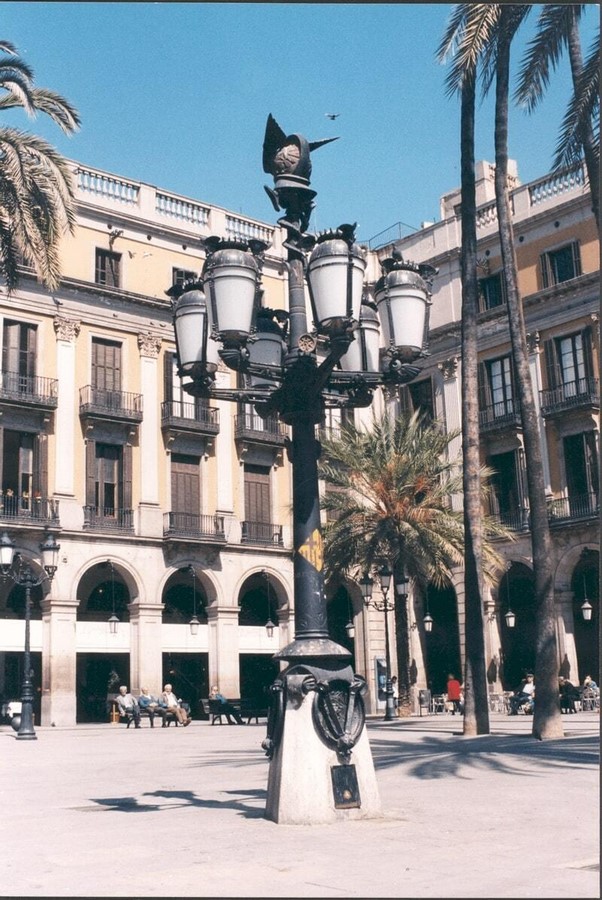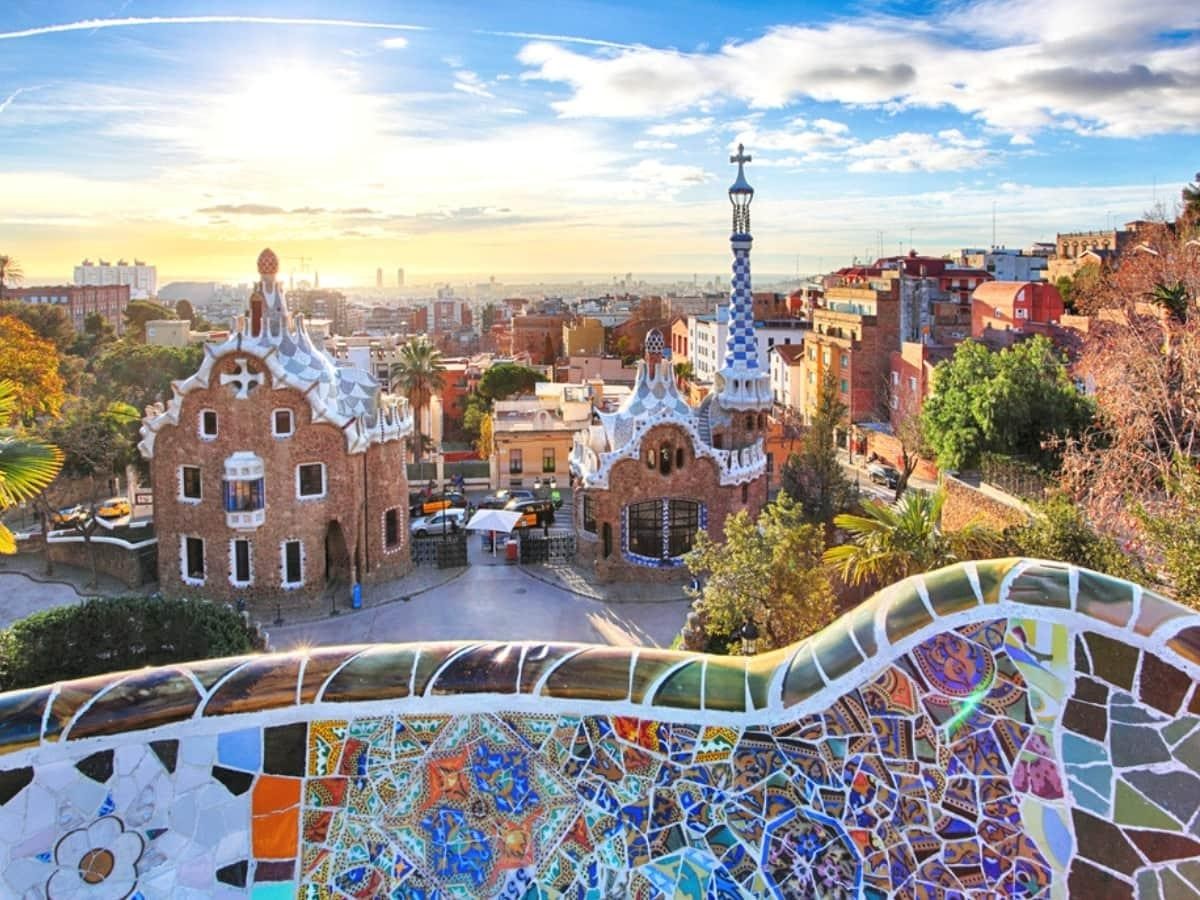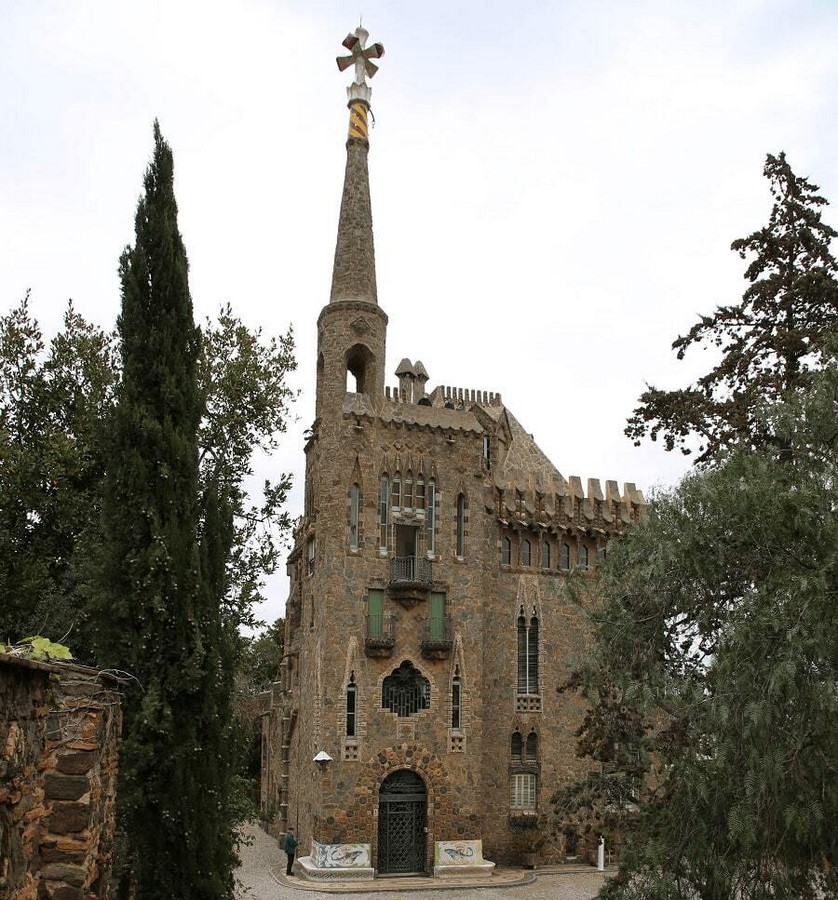Who is Antoni Gaudi?
Antoni Gaudí was born on 25 June 1852. He was a Spanish architect and designer from Catalonia.
He’s known as the greatest advocate of Catalan Modernism which started at the end of the 19th century. The main form of Catalan Modernism included arts such as painting, sculpture, and decorative arts which were important in their role as support to architecture. Antoni Gaudi had an extraordinary way of handling structures. His innovations, imaginative use of materials as well as his sense of decoration all make him a master of the Catalan Modernism.
As a child, he enrolled at the Piarists School in Reuss where he first expressed his artistic talent through painting in a collection called El Arlequin. In 1876, Gaudí began studying architecture at the Llojta School and the Barcelona Higher School of Architecture. To fund his studies, he worked as a draughtsman for various architects and constructors. Although he failed so many of his classes, Antoni Gaudi graduated in the year 1878 at the age of 26.
Why are his works unique?
The unique style used by Gaudi was influenced by neo-gothic art and oriental techniques which were prominent in the late 19th century. This was a period when the requirement to follow strict historical styles began to fade out. He was heavily influenced by the Revival Gothic architecture of the time, most notably found in the work of French architect Viollet-le-Duc.
Gaudí once described this distinction by stating, “We own the image. Fantasy comes from ghosts. Fantasy is what people in the North own. We are concrete. The image comes from the Mediterranean. Orestes knows his way, whereas Hamlet is torn apart by his doubts.”
As fascinating as his architecturally decorative works are, Gaudí is equally distinguished by his advanced knowledge of structures. Having studied geometry in his youth, Gaudi incorporated advances in engineering and his work often features catenary curves, hyperbolic paraboloids, hyperboloids, and helicoids, concepts he used to create efficient and dynamic systems. Gaudí transcended his geography and his time. Today, he is recognized worldwide. UNESCO has declared seven of his architectural works as World Heritage Sites, believing that his works “testify to Gaudí’s extraordinary creative contribution to the development of architecture and building technology in the late 19th and early 20th centuries”.
His Notable works and the Inspiration behind them
Lampost of Placa Reial
Gaudí’s first work as an architect in 1878 was the lampposts for Placa Reial, his first major work. He received the request of the City Council of Barcelona in February 1878, having graduated but not yet received his degree. He designed two lamp posts for this project: one with six arms, two of which were placed in the Placa Reial, and three, two of which were placed in the Pla del Palau opposite the Civic Government building. The lampposts were made of cast iron with a marble base and had a decoration in which the caduceus of Mercury is prominent, a symbol of commerce and an emblem of Barcelona. Although this work of Antoni Gaudi might not be as notable as the rest, it is still considered important as it was his first major work as an architect.

The Sagrada Familia
Antoni Gaudi, from 1915 till the time of his death, dedicated himself to the Sagrada Familia, a work that is considered his Magnus Opus, which is his greatest work. Sagrada familia is a blend of Gaudi’s Gothic and Art Nouveau styles. He applied all of the experimental findings of his previous projects in the work so as to create a structure that is perfect. The Nativity facade facing the sunrise depicts the birth of Christ through sculpted animals and plants. Facing the sunset, the Passion Facade depicts the crucifixion of Christ in sharp angles that evoke deep emotion. The Glory Facade, still unfinished, will ultimately be a symbol of the glorification of Christ. At over 170 meters (560 feet) it will be one of the tallest religious structures in the world. Gaudi’s clever use of tree trunk-like columns to support hyperboloid vaulted ceilings creates an ethereal and contemplative atmosphere. Decorated with vibrant stained glass windows, it creates a striking color palette that attracts and amazes visitors. While its completion date remains uncertain, the structure’s enduring appeal and cultural significance ensure that it will stand forever as a symbol of Barcelona’s architectural heritage and Gaudí’s indelible influence on the architectural world.

Casa Vicens
Gaudí’s early masterpiece, Casa Vicens, marked an important milestone in his architectural career. Immediately after graduating in 1878, Gaudi received a commission to design the residence of the Vicens family in Barcelona. Casa Vicens displays a harmonious mix of different architectural styles including Moorish, Gothic, and traditional Catalan styles. The exterior is decorated with vibrant ceramic tiles and intricate metal. The interior of the house is equally stylish, with the rooms decorated in vibrant colors and furnishings. The design incorporates a courtyard, adding some open space and natural light to the living areas. The building was completed in 1888. Although not as widely known as some of his later works, Casa Vicens is still a reflection of Gaudi’s brilliance. The building was later declared a UNESCO World Heritage Site in 2005 in recognition of its cultural importance and contribution to Barcelona’s architectural heritage.

Park Guell
Gaudi was commissioned by entrepreneur Euseby Guell to design a garden city on a hillside in Barcelona in 1900. Although the park fell short of its original vision as a housing development, it has become one of Barcelona’s most cherished public spaces. Park Guell is a beautiful landscape where nature and architecture come together seamlessly. It has winding pathways, vibrant mosaics, and impressive structures that appear as if they were born from the earth itself. The famous Serpentine Benches covered in colorful tile mosaics wind around the main lobby, offering breathtaking views of the city below. The iconic dragon sculpture welcomes visitors at the entrance and has become the park’s most recognizable landmark. Park Guell’s design gives architecture and nature harmony, transforming it into a breathtaking and enchanting place. In 1984, UNESCO declared Park Güell a World Heritage Site in recognition of its cultural and artistic significance as living proof of Gaudí’s extraordinary talent. Today, Park Güell remains a popular attraction center for tourists and locals.

Bellesguard Tower
Bellesguard Tower, also known as Casa Figueres, is a beautiful residence renovated by Antoni Gaudi. Between 1900 and 1909, the building was commissioned to him by the widow of the house. The building is a fine example of Gaudí’s distinctive architectural style, blending Gothic and Art Nouveau elements while keeping into consideration the former building. The tower’s name, “Belsguard,” translates to “beautiful view” in Catalan. The exterior of Bellsguard Tower conveys a sense of grandeur, with thick stone walls, slender towers, and ornamental turrets. Gaudí’s signature style within the residence continues to attract visitors. The use of natural light, spacious interiors, and seamless integration of indoor and outdoor spaces create a harmonious and peaceful environment.

His Death
On June 10, 1926, Antoni Gaudi was hit by a tram and died at the age of 74. He was buried in the Sagrada Familia. After his death, Gaudí’s works were ignored and less appreciated by international critics, who viewed him as baroque and too imaginative. During the Spanish Civil War in 1936, Gaudí’s workshop in Sagrada Familia was vandalized, and many of his documents, plans, and scales models were destroyed
In 1952, hundred years after the architect’s birth, the Association de Amigos de Gaudí (Friends of the Gaudí Society) was founded with the aim of promoting and preserving his legacy. As of September 2012, seven of Gaudi’s works have been described by UNESCO as World Heritage Sites.
Conclusion:
The works of Antoni Gaudi were futuristic and appeared illaudable at the time when he was alive. One of his professors, on the day he graduated, wondered if they gave a degree to a fool or a genius, and through time, his unique works revealed that he was indeed a genius. Although, his work might have been criticized at first but it is appealing to learn that he later earned the respect and recognition he deserved as an architect and how his works serve as a source of inspiration for so many architects.
References:
Arte Original (2022). Antoni Gaude: Madman or Genius. [Online]. (Last Updated June 10, 2022). Available at: https://medium.com/@arteoriginal.co/antoni-gaud%C3%AD-madman-or-genius-900669743944#:~:text=His%20inventiveness%20and%20special%20handling,master%20of%20Catalan%20architectural%20modernism.
Biography.com Editors (2014). Antoni Gaudi Biography. [Online]. (Last Updated March 31, 2021). Available at: https://www.biography.com/artists/antoni-gaudi
Claire Selvin (2020). How Antoni Gaudi’s Style Changed the Face of Modernist Architecture. [Online]. (Last Updated October 29, 2020). Available at: https://www.artnews.com/feature/antoni-gaudi-who-is-he-famous-works-1234575349/
UNESCO (2015). Works of Antoni Gaudi. [Online]. (Last Updated 2023). Available at: https://whc.unesco.org/en/list/320/
















